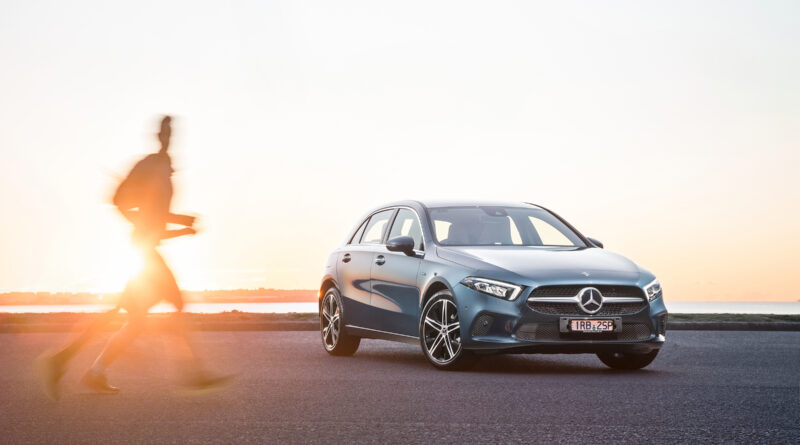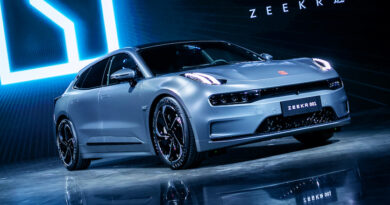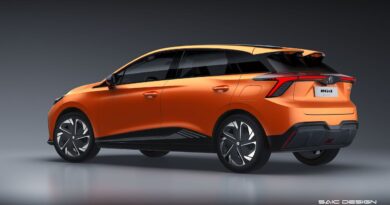Mercedes-Benz A250e review
The A250e is the latest addition to Mercedes-Benz’s expanding EQ family, which includes hybrid, plug-in hybrid and all-electric vehicles – including the EQC SUV.
In the case of the A250e the tech beneath the skin is plug-in hybrid (PHEV), teaming a petrol engine with an electric motor.
Want the latest EV news and reviews delivered to your inbox? Subscribe to our weekly newsletter!
Based on the diminutive A-Class body – in either sedan or hatchback guise – the A250e is the most affordable rechargeable electric car in the Mercedes-Benz stables.
Value
Available as a hatchback ($63,400, plus on-road costs) or sedan ($66,000 plus ORCs), the A250e shares its equipment with the regular Mercedes-Benz A250 (minus the “e”).
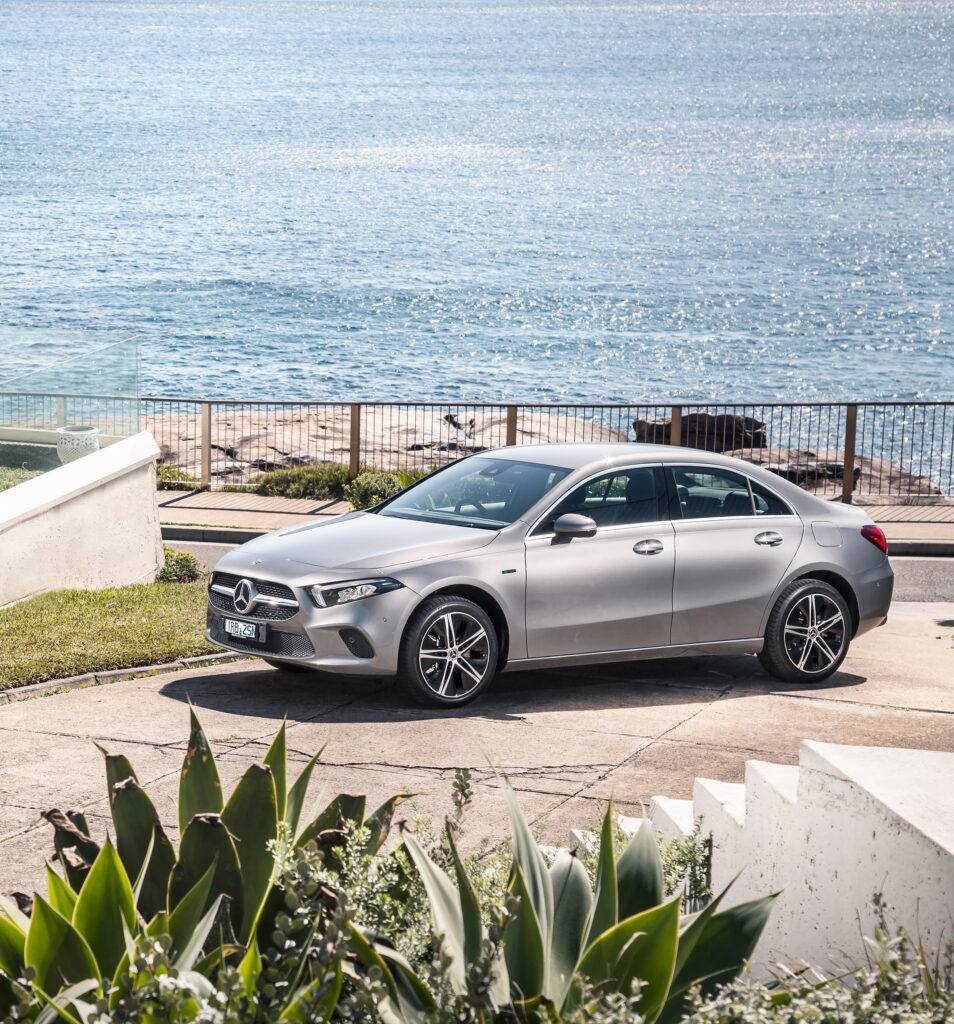
That gives it a hefty $13,000 price premium over the same car without the electric drive hardware.
Included is a digital instrument cluster and adjoining infotainment touchscreen with voice operation and Apple CarPlay/Android Auto connectivity.
There’s also 18-inch alloy wheels, head-up display, wireless phone charging, sat-nav, digital radio tuning and a generous spread of active safety gear that includes autonomous emergency braking (AEB) and speed sign recognition.
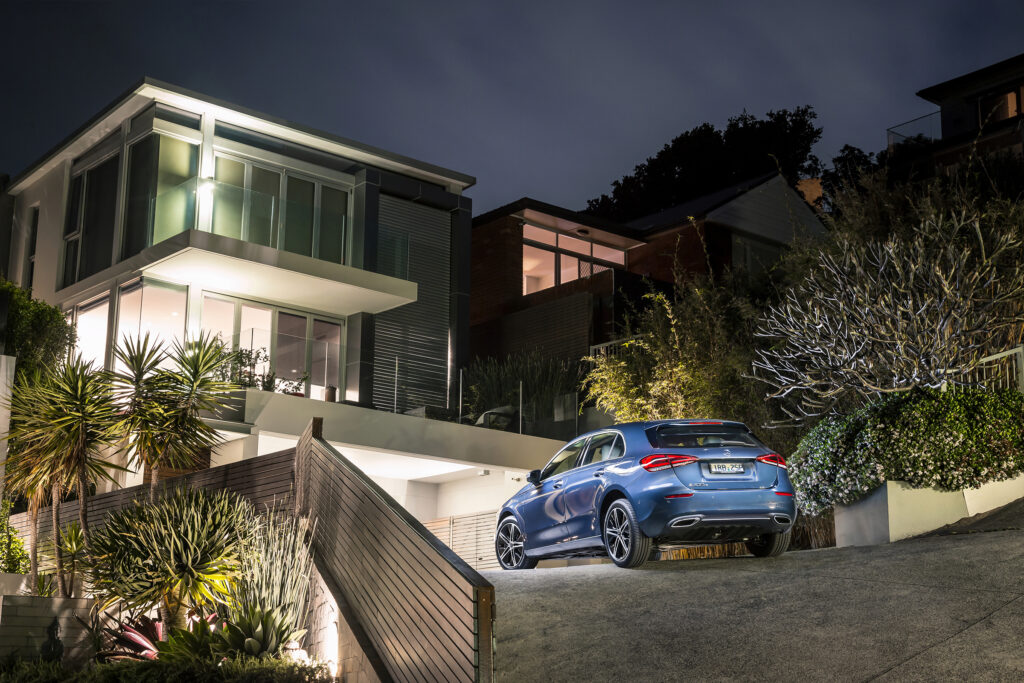
But there’s also plenty left to the options list. Smart key entry is another $790, for example, and you’re paying extra for powered seats. Plus the trim is Mercedes-Benz’s fake leather – called Artico – with the real stuff costing extra.
Inside the A250e
There’s an elegance to the cabin created by quality finishes and materials. From the circular air vents to the perforated dash and classy door trims, it’s all high quality stuff.
The broad spread of digital screens reinforces that sentiment.

Storage is also respectable, from the covered central binnacle – which houses the wireless phone charger – to a useful centre console.
Being a compact car, space is limited, especially in the rear. Best limit the rear seat to two people, and smaller humans will work better with the tight footwell and head space.
At least those up front have good head and leg room, and visibility is decent, too.
It’s all identical to a regular (non-PHEV) A-Class, at least until you get to the boot.

The luggage area has a slightly higher floor to accommodate the repositioned fuel tank and AC/DC chargers.
But it’s still a useful cavity of 310 litres for the hatch and 355L for the sedan (45L and 50L smaller respectively compared with a petrol model).
Performance and efficiency
There’s some clever packaging beneath the skin of the A250e to fit in what is a lot of hardware into a relatively small vehicle.
Whereas a regular A250 gets a 2.0-litre engine, the A250e gets the 1.3-litre four-cylinder turbo used in the A180 and A200.
But it’s the electric side that most owners will likely utilise more.
A new eight-speed automatic transmission houses a compact 75kW/300Nm electric motor.
It’s powered by a 15.6kWh battery pack claimed to provide 73km of all-electric range (or around 10km less using the tougher WLTP testing method).
Our experience suggested somewhere around 60km is realistic in everyday driving.
Whereas some PHEVs can revert to the petrol engine with modest throttle inputs, the A250e makes the most of the generous 300Nm on offer. It helps there’s a click-down point on the accelerator that gives a physical barrier before the transition to petrol.
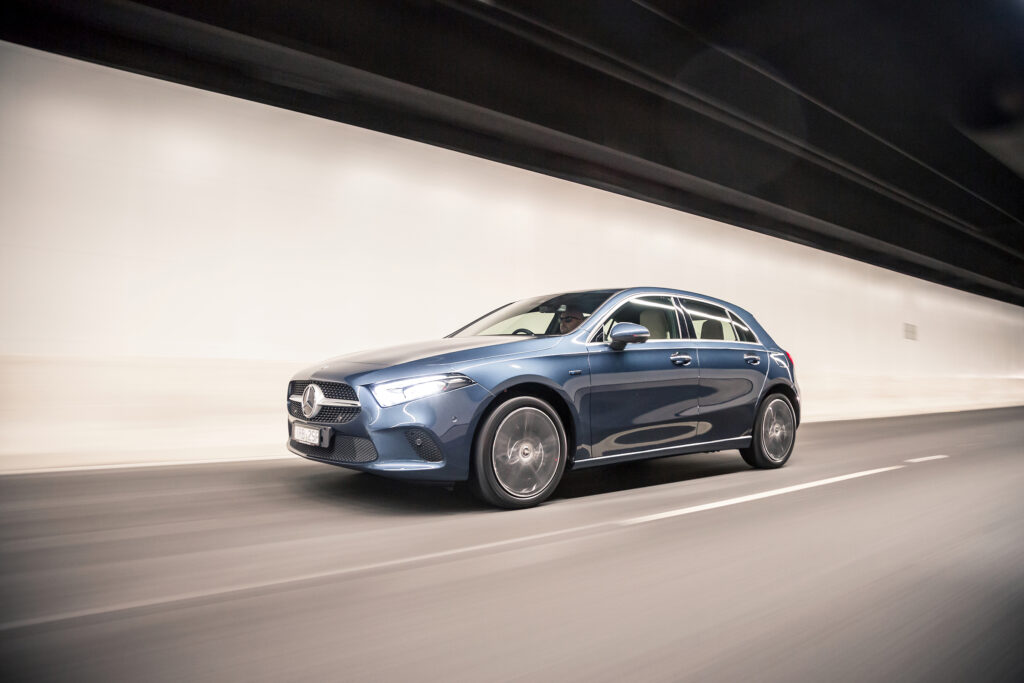
Performance is thoroughly respectable, especially below 80km/h.
The A250e PHEV zips through traffic nicely, and there’s an enthusiasm to its initial responses.
Approaching freeway speeds it’s more leisurely – and overtaking will likely require some fossil fuel – but it creeps to 100km/h without needing assistance.
Electricity consumption hovered around 18.5kWh/100km during our drive.
The drivetrain is less impressive once the petrol engine kicks in.
The little 1.3-litre isn’t overly endearing without electric assistance – there’s 118kW and 250Nm – and even with a turbo it’s working hard once heavily relied on to shift the 1.6-tonnes of plug-in hybrid electric machine.
It largely depends on how much charge the batteries have.
In around town running you’re likely to be generating electrons, allowing the electric motor to chime in and fill in the lack of torque low in the rev range.
Benz claims 450Nm of combined torque (motor and engine) although it never felt that hearty to us.
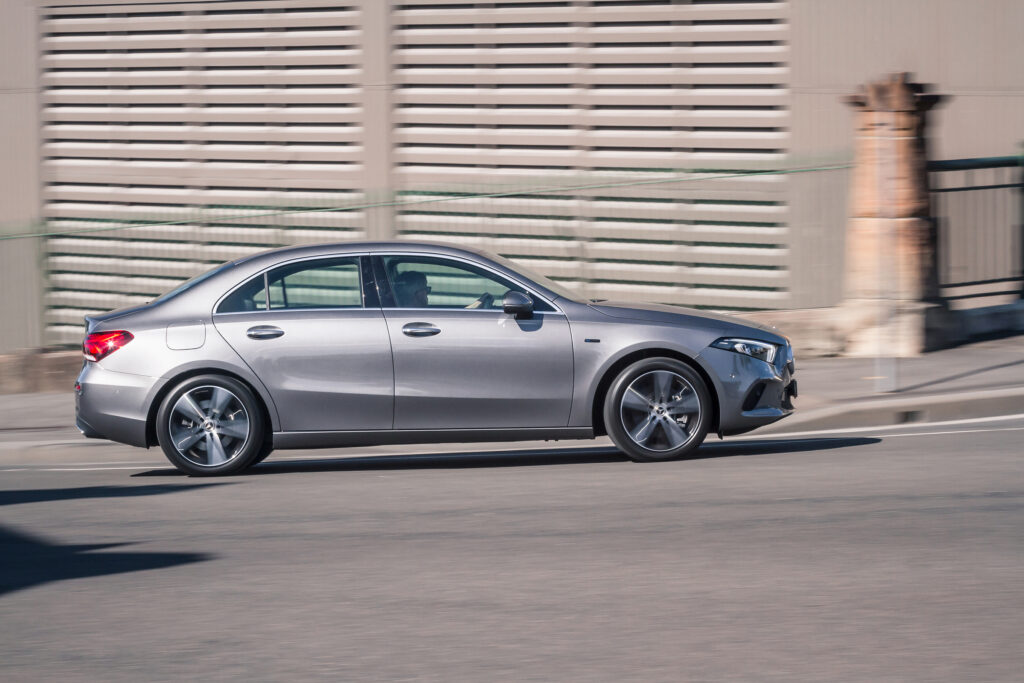
Still, with everything working in unison it’s certainly punchy, and the claimed 6.6 seconds required to top 100km/h seems achievable.
But there can be times when the batteries will be depleted – on extended uphill stretches, for example – and the little 1.3 can end up working pretty hard. There are times you can hear the air thrusting out of the central exhaust.
As for fuel use, as with all PHEVs you can forget the official claim, which in the case of the A250e is 1.6 litres per 100km. That only applies if you drive it for 10 or 20km with the petrol engine running.
Our experience suggests something like 7L/100km is realistic once you’ve depleted the batteries. That’s good but easily outdone by a regular hybrid vehicle.
All of which points to the A250e being more useful when in EV mode, the setting that it’s nicer to drive and allows the car to largely live as an EV if you’re doing fewer than 60km daily.
Speaking of modes, there are various drive modes depending on what you’re trying to achieve. Sport engages the petrol engine more often, whereas Electric naturally prioritises the electric motor. Battery Level maintains the current charge, while Comfort is a good middle ground if you want performance and some petrol assistance.
There’s also various levels of regenerative braking that can be adjusted using the paddles on the steering wheel.
But the smart setting is best most of the time. It looks at the speed limit and surrounding traffic and adjusts how much regeneration – effectively braking – accordingly. It’s handy around town, where the car will sort itself and get that electric motor harnessing more energy if the traffic slows ahead.
Charging the Mercedes-Benz A250e
A 15.6kWh lithium-ion battery pack provides about 60km of EV range. It’s covered by a six-year, 100,000km warranty (which is short of the eight years, 160,000km provided to the all-electric Mercedes-Benz EQC).

However, the electricity consumption figures by the car’s onboard computer suggest the usable battery capacity is less than the 15.6kWh claim.
Whatever the headline number, it’s a useful capacity in the diminutive A-Class body, allowing all-electric driving for plenty of driving.
Charging is done via a Type 2 AC plug capable of accepting 3.7kW. While you can utilise a wallbox charger, a regular powerpoint (providing 2.4kW) will suffice for many, charging the battery from flat to full in about 7.5 hours.
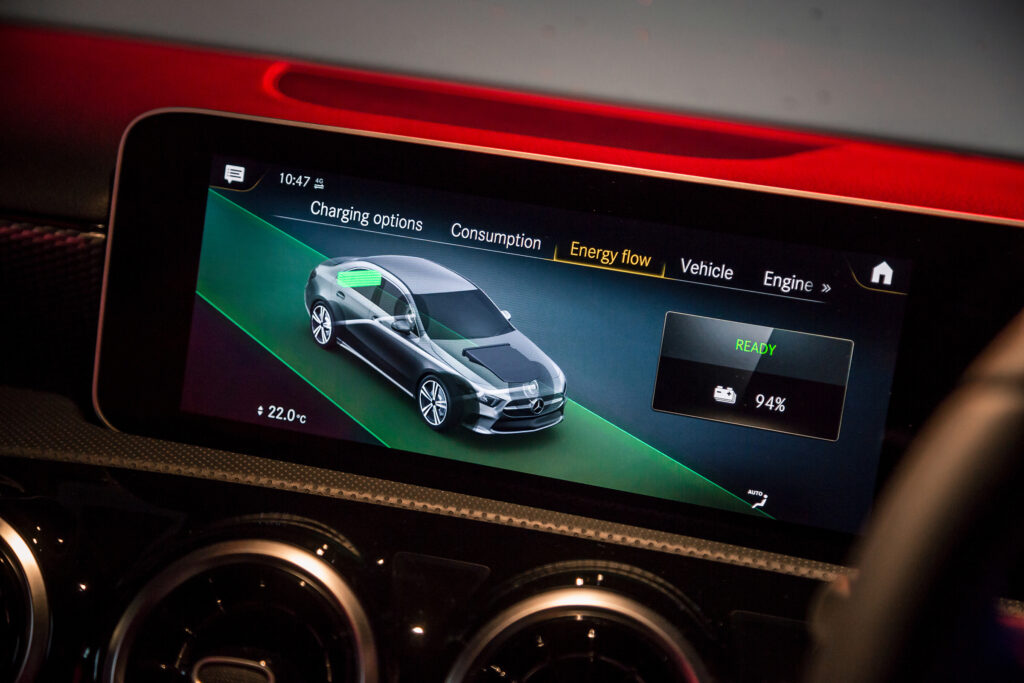
Those wanting faster charging can opt for the DC Charging Package, which is $1490.
As the name suggests, it adds a DC charging port – creating a Type 2 CCS plug – and can accept up to 24kW from public charging stations. That allows for an 80 percent charge in about 25 minutes.
The DC charging pack also brings a larger AC charger, doubling its maximum charge to 7.4kW. That means a circa-three-hour charge using a home wallbox charger.
Ride and handling
Mercedes-Benz has typically fitted relatively taut suspension to its A-Class models, the thinking being they should be fun and athletic (sometimes at the expense of ride comfort).
The philosophy seems to have changed with the A250e, which has a more supple setup.
Sure, you’ll be feeling the smaller bumps and those repeated inputs on country roads, but larger imperfections and speed humps seem more sedate in the A250e.
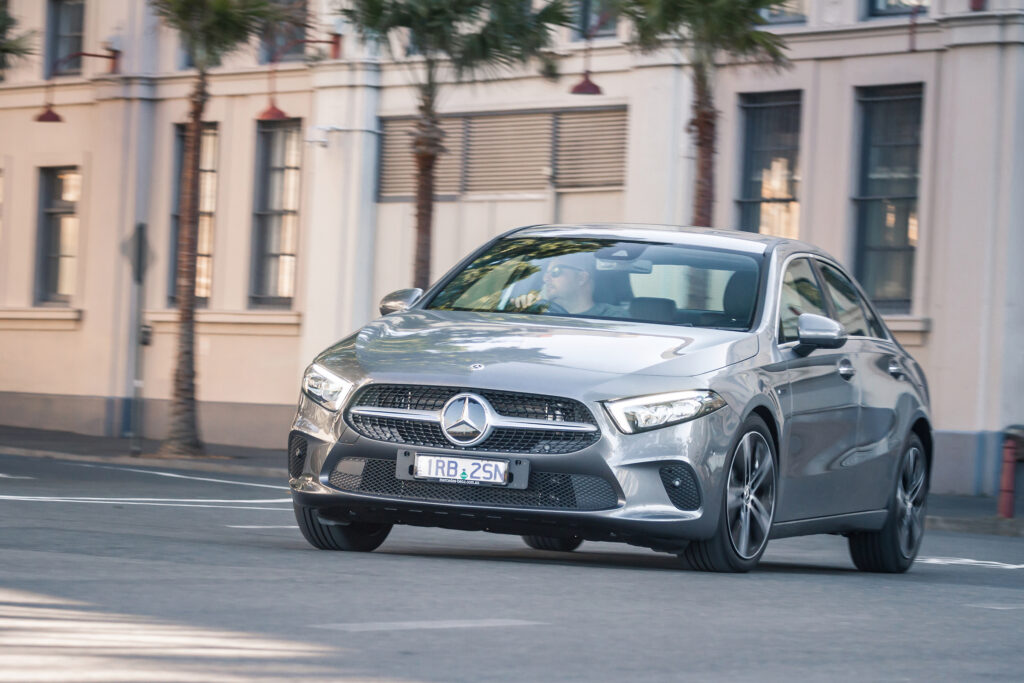
It does come at the expense of that A athleticism, though, in part because of the additional weight. The A250e is about 240kg heavier than a regular A250. At a smidge over 1.6 tonnes it’s more large car in its bulk, in part because of the 150kg battery pack.
Quick direction changes are the most obvious reminder of the kilos underneath.
That and the 18-inch Bridgestone rubber working to keep things in check mid-corner.
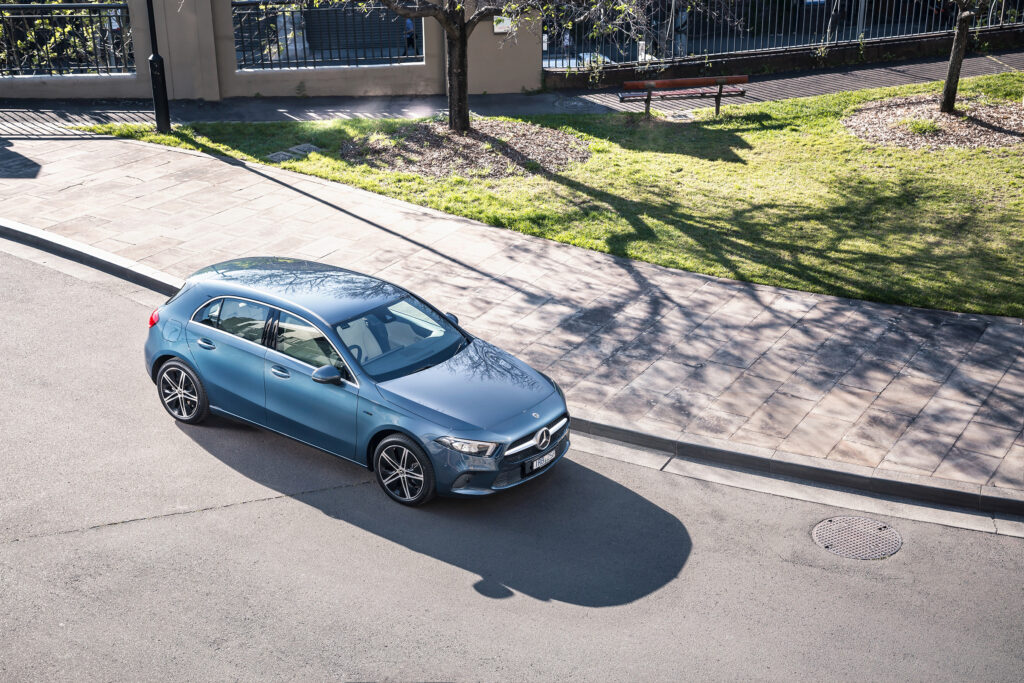
By small PHEV standards the A250e is no slouch, but it doesn’t quite have the cornering nous of its petrol-fed siblings.
It’s worth pointing out that the A250e does without the multilink rear suspension system used on the regular A250.
Instead there’s a torsion beam setup reserved for the cheapest A180 model.
Elsewhere, the A250e lives up to expectations without excelling. It’s generally quiet and refined (provided you’re in EV mode) with tyre noise only an issue on certain road surfaces.
Talking point
Engineers have had to work hard to fit all the petrol and electric hardware into the A250e, which is a small car, after all.
A truncated exhaust stops half way down the car, exiting under the middle somewhere – so there’s no visible exhaust outlet. It’s an indication of the efforts gone to in fitting everything in.
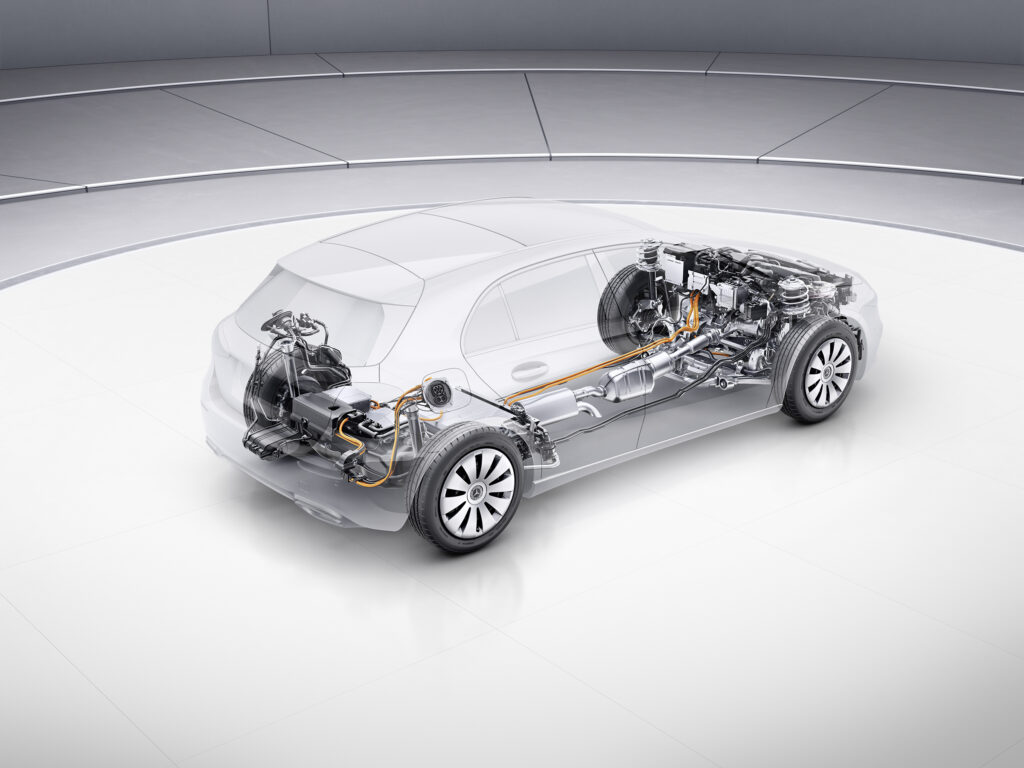
The fuel tank has also been relocated to under the boot floor, with AC and DC chargers sitting on top of it.
That allows the batteries – one of the heaviest components in the car – to be mounted low under the back seat.
Safety
The A250e comes loaded with safety kit, something that helped it (and all A-Classes) achieve a five-star ANCAP safety rating.
There’s blind spot warning and autonomous emergency braking (AEB), including pedestrian and cyclist detection.
Traffic sign recognition alerts you to the current speed limit while nine airbags pop into action if you manage to out-smart all that crash avoidance tech.
Verdict
The A250e has a refreshingly useful electric-only range, one that is towards the upper end of all PHEVs currently on sale. In EV mode it’s also nice to drive, albeit with a bit less of the sportiness of other A-Classes.
But it comes at a big price premium, one likely to scratch it off the shopping lists of many, especially when you can get the faster, better-equipped, all-wheel drive A250 4Matic for around $7000 less.
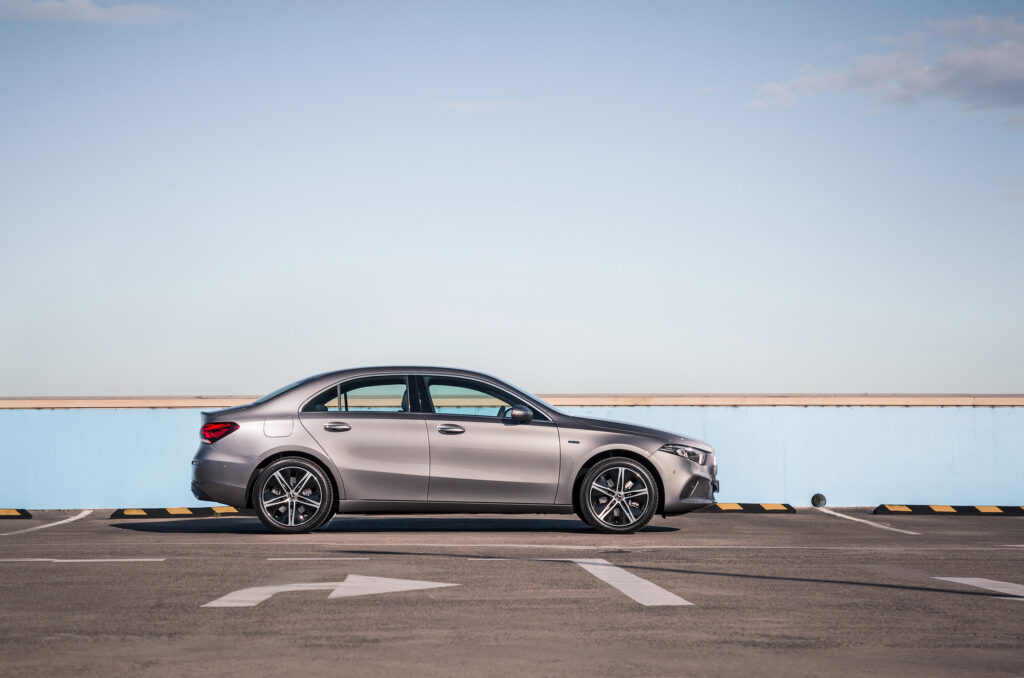
What makes it tougher to swallow is the Mercedes-Benz GLC300e; as a plug-in hybrid it’s about $3500 more than the petrol-only GLC300 – and it comes with more equipment. Why the A250e has such a huge premium on it is a mystery.
Not that Mercedes-Benz is having any trouble shifting them. Supply in Australia is very limited because of tax breaks in Europe that have some markets queuing for the latest addition to the Mercedes-Benz EQ family.
Mercedes-Benz A250e specifications
Price: $63,400 (hatch), $66,000 (sedan), plus on-road costs
Basics: PHEV, 5 seats, 4 doors, small hatch or sedan, FWD
Range: 60km (on test)
Battery capacity: 15.6kWh
Battery warranty: 6 years/100,000km
Energy consumption: 18.5kWh/100km (on test)
Motors: 1 front 75kW/300Nm
Engine: 1.3-litre 4-cylinder turbo, 118kW/250Nm
AC charging: 3.7kW (optional 7.4kW with fast charging kit), Type 2 plug
DC charging (optional at $1490): 24kW, CCS plug
0-100km/h: 6.6 seconds

